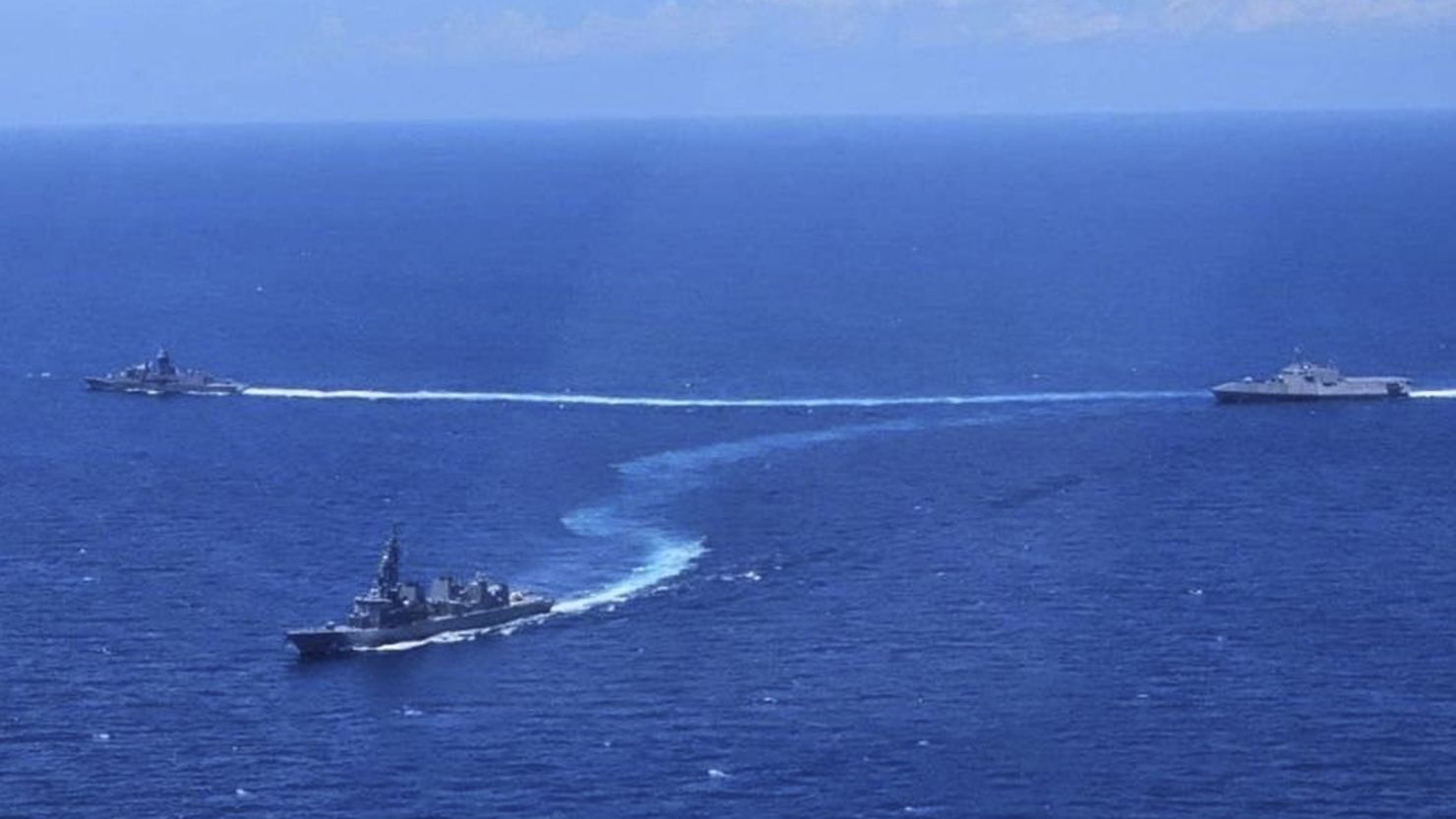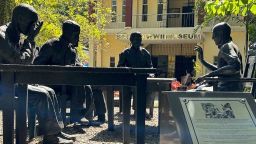Colonization, bloodshed, war crimes, occupation, controversial military bases. These are all issues intertwined in the collective history of the United States, Japan and the Philippines.
But when the leaders of the three countries sit down at the White House on Thursday, a key topic will be a much more present-day worry that binds their relationship – a common concern over China.
“The perceived threat of China has really driven these three together,” said James D.J. Brown, associate professor of political science at Temple University in Tokyo, ahead of this week’s summit between US President Joe Biden, Japanese Prime Minister Fumio Kishida and Philippine President Ferdinand Marcos Jr.
But it is a possible conflict over Taiwan – the democratically ruled island that China’s Chinese Communist Party (CCP) views as part of its territory, despite having never controlled it – that dominates strategic thinking.
Chinese leader Xi Jinping has vowed to bring Taiwan under Beijing’s control and has not renounced the use of force to do so.
The Taiwan Relations Act obligates Washington to provide weaponry for the island’s defense, and Biden has repeatedly suggested he would use US military personnel to defend it in the event of a Chinese invasion (though White House officials have said the US policy to leave that question ambiguous has not changed).
Both the Philippines and Japan are US defense treaty allies, and the US military retains permanent bases in Japan and has base rights in the Philippines.
That threat is manifested in three key areas – Taiwan, the South China Sea and the Japanese-controlled Senkaku Islands in the East China Sea, analysts say.
In the event of conflict, China could not ignore either with less than a few hundred kilometers of water separating both the Philippines and Japan from Taiwan, analysts say.
“If you’re China, you cannot invade Taiwan, without dealing with the Philippines first, or dealing with the Japanese bases as well,” said Micah Jeiel Perez, an assistant professor at the University of the Philippines Diliman.
‘Historic meeting’
Both Marcos and Kishida have made plain that peace in Taiwan is essential to their national security.
“Should there in fact be conflict in that area … it’s very hard to imagine a scenario where the Philippines will not somehow get involved,” Marcos told Nikkei Asia in an interview last year.
Japanese officials have previously pointed out that 90% of their country’s energy needs are imported via the water around Taiwan, tying Japan’s economic stability to Taipei’s autonomy.
Those sea lanes extend into the South China Sea, which gives Japan a vested interest in keeping it part of a “free and open Indo-Pacific,” a term coined by former Japanese Prime Minister Shinzo Abe that has become a mantra for US military presence in the region.
“Japan and other parts of the world actually are very much dependent on maritime traffic that passes through the South China Sea,” said Ricardo Jose, also a professor at the University of the Philippines.
“In Japan’s case, it is very strategic. It’s a strategic necessity that they protect those sea lanes,” Jose said.
In an interview with CNN on Sunday ahead of the summit, Kishida called the Philippines “an important partner in maintaining a free and open Indo-Pacific region.”
“I believe that this historic meeting will be a very valuable opportunity to demonstrate to the world how the three countries can work together for peace and stability in the region,” he said of the upcoming three-way summit in Washington.
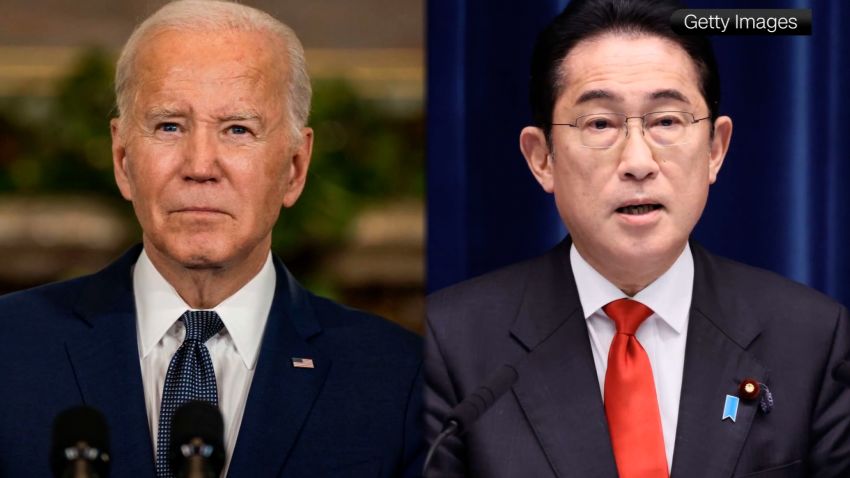
Japan and Philippines both have separate territorial disputes with China, in the former’s case the Senkaku Islands in the East China Sea and in the latter’s areas of the South China Sea.
Philippines-China tensions have focused on Second Thomas Shoal, which sits about 200 kilometers (125 miles) from the coast of the Philippine island of Palawan. In the 1990s, the Philippines grounded an aging World War II-era navy transport ship on the shoal, to help enforce its claim to the area. The ship is now mostly a rusted wreckage and is manned by Philippine marines stationed on rotation.
Meanwhile, China claims the shoal, which is in the Philippines’ exclusive economic zone, as its sovereign territory, as it does much of the South China Sea, in defiance of an international arbitration ruling.
Recent clashes have occurred when Philippine attempts to resupply the forces on the ship have been met by China Coast Guard ships firing water cannons at the Philippine resupply boats, resulting in injuries to Filipino sailors and damage to the vessels.
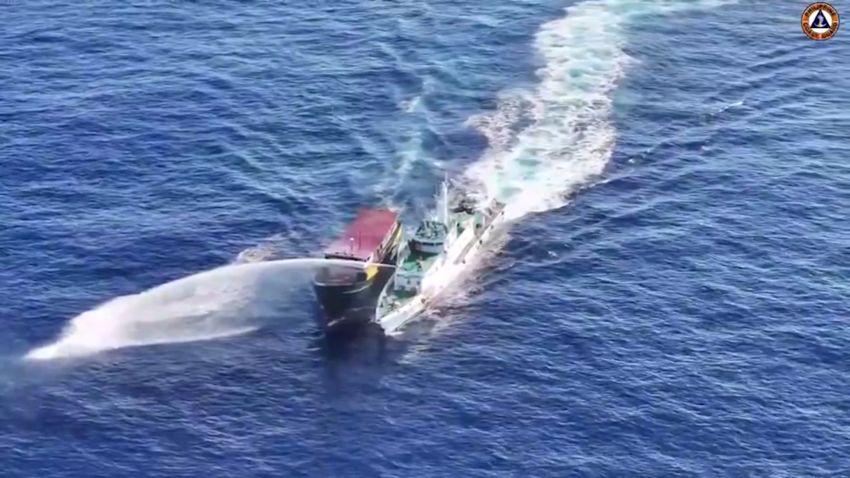
Marcos has vowed not to submit to Chinese intimidation, and the US has steadfastly said the US-Philippines mutual defense treaty covers Second Thomas Shoal and the Philippine forces involved.
When it comes to the Senkakus – called the Diaoyus by China – Washington has also reiterated repeatedly that they are covered by the US-Japan mutual defense treaty as Beijing has been keeping a steady presence of its coast guard vessels around the Japanese-controlled islands.
A tense past
The Chinese tactics have united Biden, Kishida and Marcos in a way that few might imagine given the complex and often troubled trilateral history involved, analysts say.
The Philippines became a colony of the United States in 1899 after Spain ceded control of its longtime territory to Washington as part of the settlement of the Spanish-American war.
But Philippine nationalists fought against US control in the 1899-1902 Philippine-American War, during which more than 4,200 US troops, 20,000 Filipino troops and 200,000 Filipino civilians died, according to a US State Department history.
During World War II, the Philippines, still a US colony, was subject to a brutal invasion by the forces of Imperial Japan, with as many as 1 million civilian and military deaths, according to the National World War II Museum in New Orleans.
Tens of thousands of Filipino soldiers died during the infamous Bataan Death March and in the prison camps where they were interned at its terminus.
A post-war trial would find the Japanese commander in the Battle of Bataan and the man responsible for the troops that carried out the Death March, Gen. Masaharu Homma, guilty of war crimes. He was executed in 1946.
But analysts say the World War II history with Japan is forgotten – if not quite forgiven – in the Philippines.
The country has immediate, pressing social, economic and political problems to deal with that effect the everyday lives of its citizens, Perez, the University of the Philippines’ professor, said.
So despite any lingering grievances, the “cold calculus of geopolitics” means keeping Japan and the United States as allies is the Philippines best option for issues of territorial sovereignty, Perez said.
“Alliance building is the most practical way to deal with China’s moves” in the South China Sea, he said.
Lattice alliance
Analysts note how fast things have changed in the Philippines, even for that US base access. Under the presidency of Rodrigo Duterte, Marcos Jr’s predecessor, any US military access to the country where it once maintained two of its largest overseas military installations, Clark Air Base and Subic Bay Naval Base, was in doubt.
Duterte looked more favorably on relations with China than the US and at one point threatened not to renew agreements that let the US military operate on the soil of its former colony.
But Marcos has gone in the opposite direction, cozying up to Washington to push back against Chinese attempts to squeeze the Philippines out of territorial claims like Second Thomas Shoal.
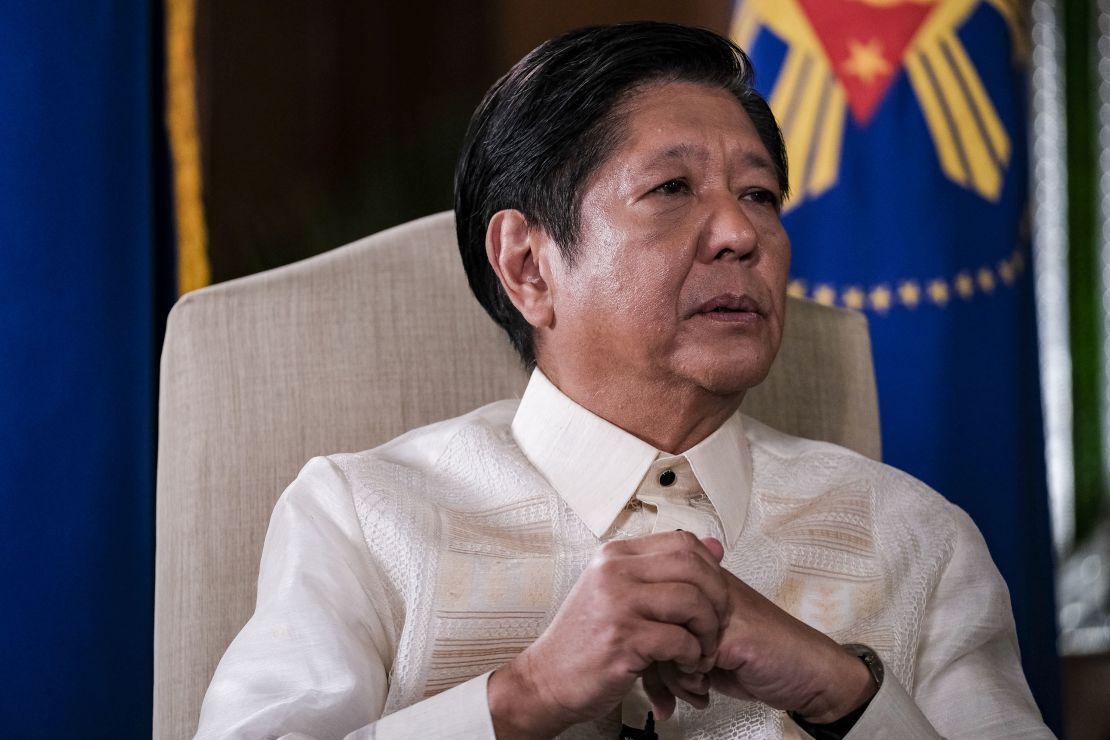
Meanwhile, the Biden administration is setting up what Robert Ward, Japan chair at the International Institute for Strategic Studies, called a “latticework” of alliances around China, rather than a “hub-and-spoke” system where bilateral ties went out to a range of foreign capitals with Washington at the center.
Like the trilateral US-Japan-Philippines relationship in focus this week, the US, Japan and South Korea have also increased defense cooperation; key US ally Australia has established new defense ties with Japan, India and the Philippines; the Philippines is importing military hardware from India; Japan is strengthening security ties with Vietnam.
One lattice was on display Sunday as warships and planes from the US, Japan and the Philippines were joined by forces from Australia for their first-ever Multilateral Maritime Cooperative Activity in the South China Sea.

Analysts say that with the latticework alliance approach, the hope of the Biden administration, as well as like-minded leaders in the Pacific, is that it will have the stability to withstand possible changes in leadership, especially with a presidential election coming in the US in November.
Brown, the Temple University professor, called the approach “future-proofing.”
“Even if you have these mechanisms created, they can still be bulldozed. But at least you’ve got something that you’ve created, and you hope that it would last through a (Donald) Trump presidency,” Brown said.
“It’s a very fragile set of flowers that are blooming in the Indo-Pacific,” said Ward at IISS. “They need watering and fertilizing every day.”

